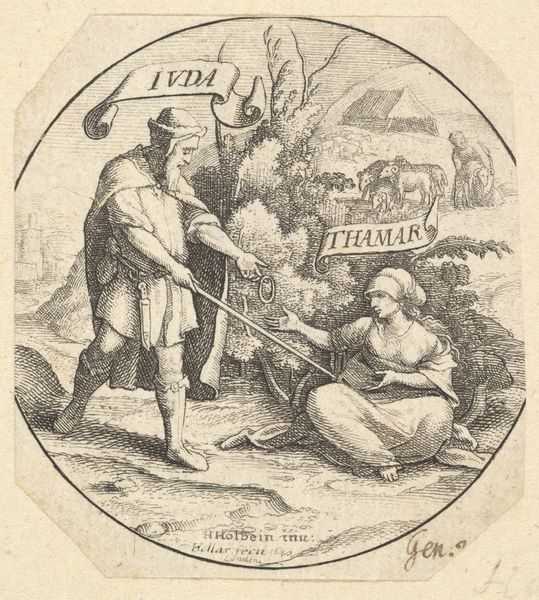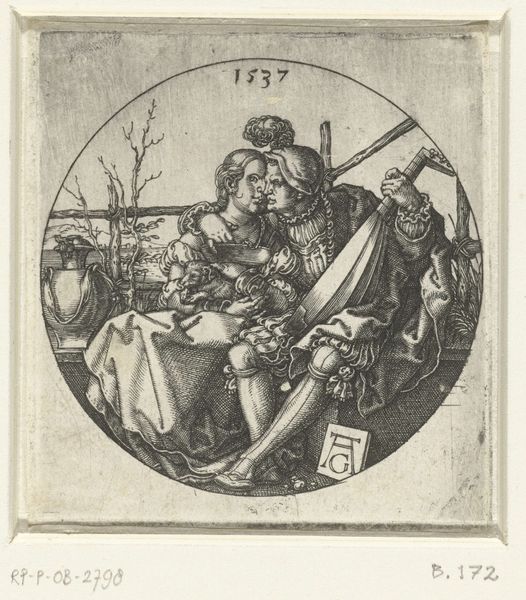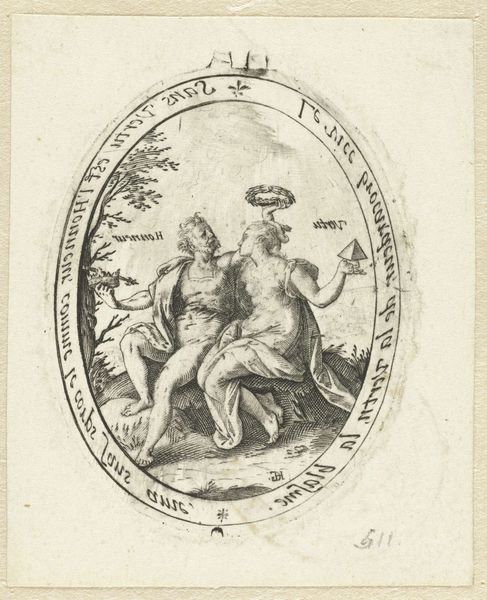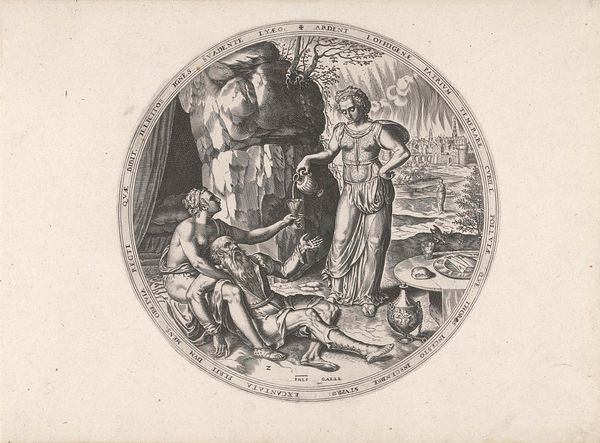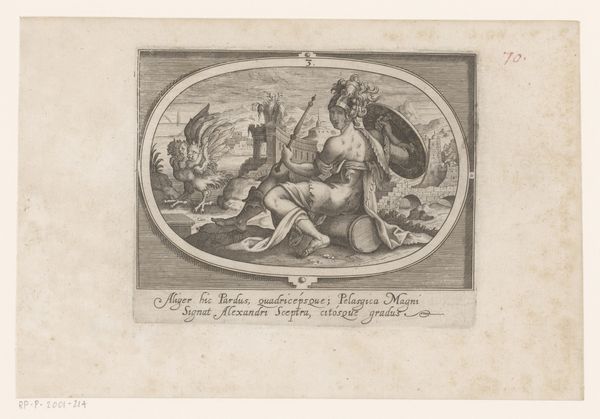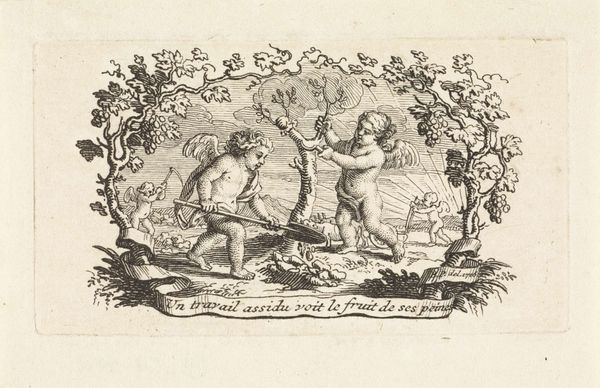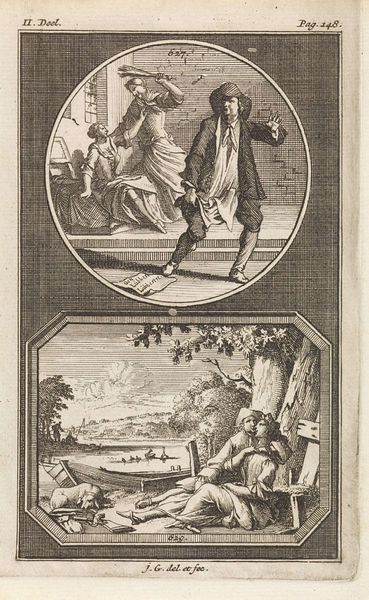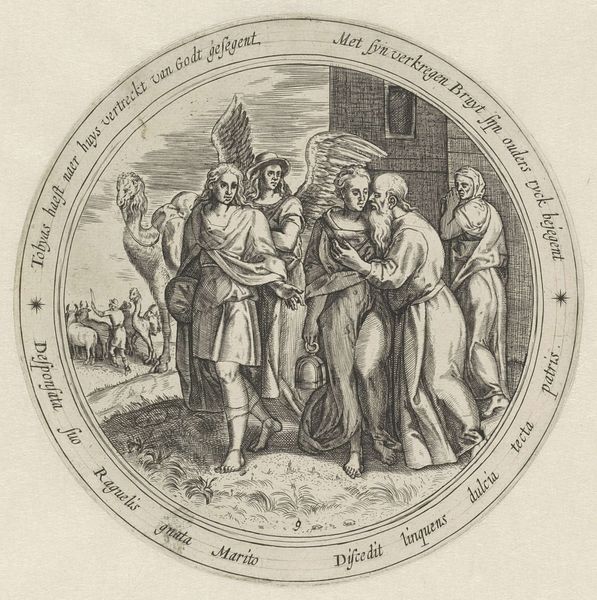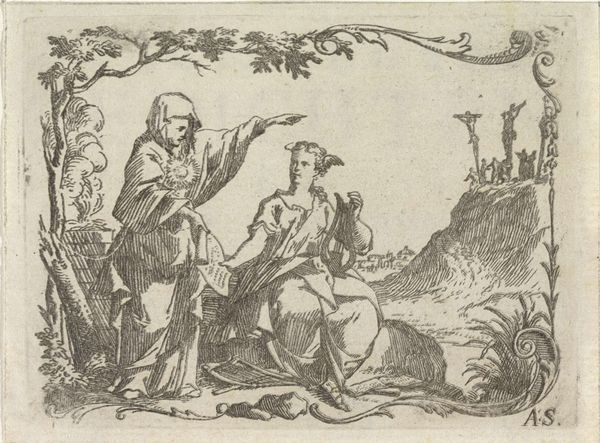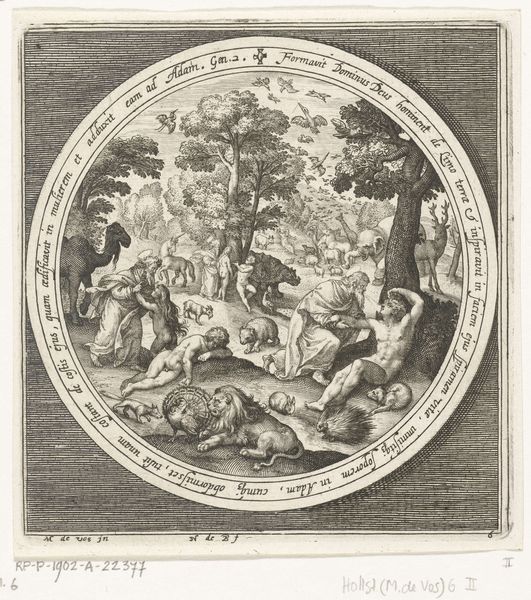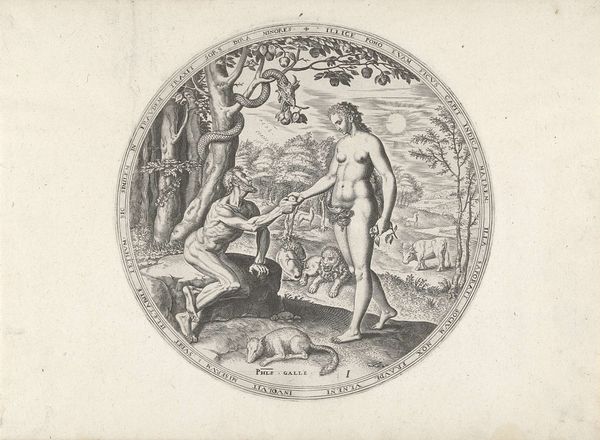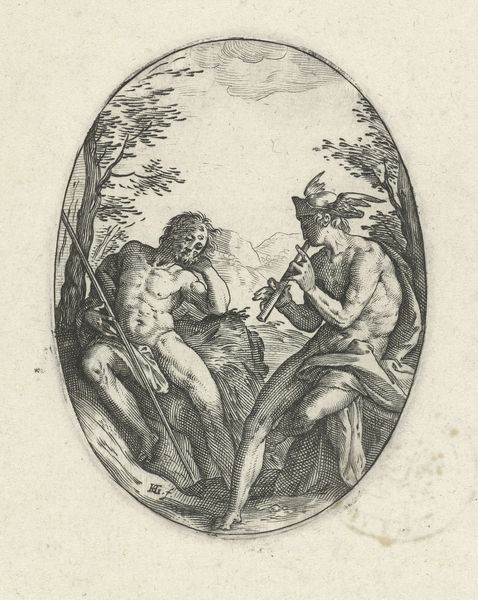
print, etching, engraving
#
narrative-art
#
baroque
# print
#
etching
#
figuration
#
genre-painting
#
engraving
Dimensions: height 60 mm, width 57 mm
Copyright: Rijks Museum: Open Domain
Editor: So, this is Wenceslaus Hollar's etching, "Juda en Tamar," from 1640. It’s quite small and delicate. I am intrigued by the stark contrast between the figures. What's your interpretation of the piece? Curator: Immediately, my mind jumps to the cultural memory embedded in the images, particularly regarding gender and power. Hollar captures a charged moment, almost a visual legal dispute. Do you see the objects in Tamar's hand? The staff, the seal? These aren't merely props. They symbolize Judah's power and identity. Tamar uses them to challenge his authority and claim her rightful place in the lineage. Editor: Right, it's like she's presenting evidence. So it’s about a challenge to power, using symbolic objects as proof? Curator: Exactly! It delves into cultural memory around justice and lineage. Tamar reclaims what’s been denied to her. These objects evoke that very tension and ultimate recognition of the child's paternity. Hollar emphasizes this cultural continuity by using carefully considered imagery that persists even now. Note how their poses also echo earlier artistic depictions of judgement scenes. Editor: That's a completely different reading than I initially had! I was just focused on the individual figures. Curator: The composition directs us to decipher these codes, drawing upon shared cultural understanding. What strikes you now, thinking about it as a piece negotiating social codes and memory? Editor: I see it as a subtle but powerful statement about agency and patriarchal systems of control, revealing itself through common objects. Thank you. Curator: And perhaps a potent reminder of how symbols can shape narratives and social structures! I’ve also noticed the circular composition unifies this artwork’s intention, placing the drama within a sphere of destiny.
Comments
No comments
Be the first to comment and join the conversation on the ultimate creative platform.
